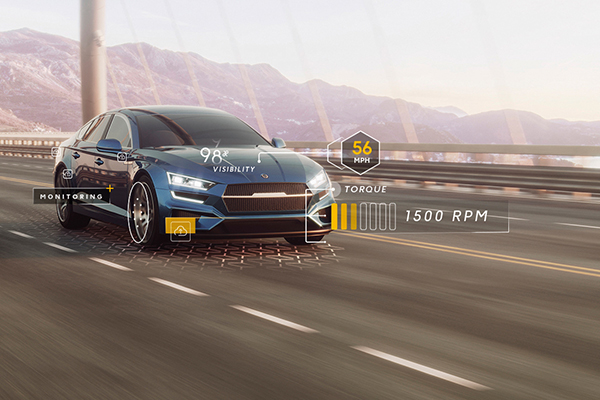While mobile data is useful for geographic location services, CVD is essential for driving the future of transportation and mobility forward.

By: Daniel Tibble, Wejo
It’s no secret that America’s transportation system needs improvement. The country’s roads have actually become more dangerous over the last few years. In 2020, a year where people drove significantly less frequently because of the pandemic, there was an eight percent increase in motor vehicle deaths compared to 2019, according to the National Safety Council. In the latest report card on the nation’s infrastructure from the American Society of Civil Engineers, America received a C-, due in part to the fact that many of the country’s roads and bridges are aging and in poor to mediocre condition.
Automakers and transportation agencies that manage the infrastructure and vehicles on our roadways need reliable, accurate sources of transportation information on demand to improve vehicles and roadways for the betterment and safety of mobility.
Many transportation insights collected today are sourced from mobile data. Mobile devices can gather transportation data by accessing information about location and speed shared through smartphone apps. The amount of data that can be collected through mobile phones is massive and can be extremely detailed. For example, mobile data can be gathered even after the vehicle is parked, which is incredibly powerful for sectors like retail and hospitality. However, when it comes to improving transportation, connected vehicle data (CVD) is more accurate, precise and intelligent.
The leading automakers and transportation agencies leverage CVD to improve our roadways and cars. CVD, for context, is sourced directly from integrated vehicle sensors embedded within vehicles and parts from major automotive manufacturers and Tier 1s, allows for near-real-time data collection and analysis, and helps organizations work toward safer and smarter transportation by better understanding driving events, when and where they happen. Additionally, CVD can offer insights into driver behaviors throughout their journey and help decision makers discover where harsh braking or speeding occurs and understand the elements (e.g., bad weather, road hazards, etc.) that can alter a driver’s decision making and behavior.
In this article, we’ll dig into the benefits of CVD and discuss why it outshines mobile data and proves to be a more valuable source of insight for the improvement of the transportation industry.
One key aspect of how CVD can improve the transportation industry is its accuracy. CVD has the clear advantage over mobile data when it comes to accuracy because CVD is a single source dataset. This means there is little to no inconsistency between data from different vehicles and, importantly, guarantees that the source is a car. Take assessing traffic congestion for example, mobile phone data will often register a speed and assume the user is driving, even when that is not the case (e.g., pedestrians being counted in slow-moving traffic or people in a bus inaccurately indicating congestion).
Accurate data is essential for best understanding driver behavior, too. From optimizing marketing targeting and spend to enabling innovations in R&D and product development, insights from the most accurate data sources are essential for leaders and decision-makers to make the best choices.
Another advantage of CVD is that its higher precision location data suffers less from jitter, or connection disruptions, and manifests to smoother vehicle journeys that better represent the real-world and real-time movement of the car. This is critical for applications like mapping roads and infrastructure. For example, drivers traveling under bridges and underpasses will often experience a lag or disconnection in when using navigation services. CVD GPS devices have antennas on the outside of the vehicle, allowing for the best possible reception.
While mobile data often suffers from connectivity issues which can impact data precision, CVD typically achieves a precision of under 3 meters 95% of the time.
CVD creates unique intelligence based on a variety of sensors that offer mobility insights – enabling previously impossible capabilities around road conditions, driving safety and more. These sensors provide more accurate and robust data points – like occupancy counts, use of windshield wipers and emergency braking – that can tell a more complete story than a mobile data point.
With over 280 million vehicles on the road today, CVD is needed to help address safety hazards and worsening road conditions. Using CVD, those that are innovating transportation will have access to the accurate, precise and intelligent insights needed to improve the future of mobility.

Daniel Tibble
Head of BI & Enrichment, Wejo
An experienced data leader, focusing on building data driven cultures and delivering maximum business benefit though data, analytics and data science.
Scott Ellyson, CEO of East West Manufacturing, brings decades of global manufacturing and supply chain leadership to the conversation. In this episode, he shares practical insights on scaling operations, navigating complexity, and building resilient manufacturing networks in an increasingly connected world.